Light Microscopy Shines When Differentiating Hairs and Fibers
At McCrone Associates, we are often asked to identify unknown materials. Depending on the analysis request and the particle type that is found, analysis using light microscopy may provide more specific information than spectroscopic methods alone. FTIR spectroscopy is useful for determining the composition of many materials and mixtures; however, there are a number of protein-based materials and cellulose-based materials that cannot be easily differentiated using IR spectroscopy. For these types of samples, light microscopy may be more informative about the potential source(s) of contamination if the goal is to reduce or eliminate those materials from a laboratory or production area. Among the many protein and cellulose-based materials that we find, hairs and fibers are among the materials for which a morphological analysis may help to differentiate possible sources.
As the spectra below show, there isn’t much information in the spectra that would help to differentiate these protein-based materials, yet the hairs and fibers are often distinguishable when examined using light microscopy.
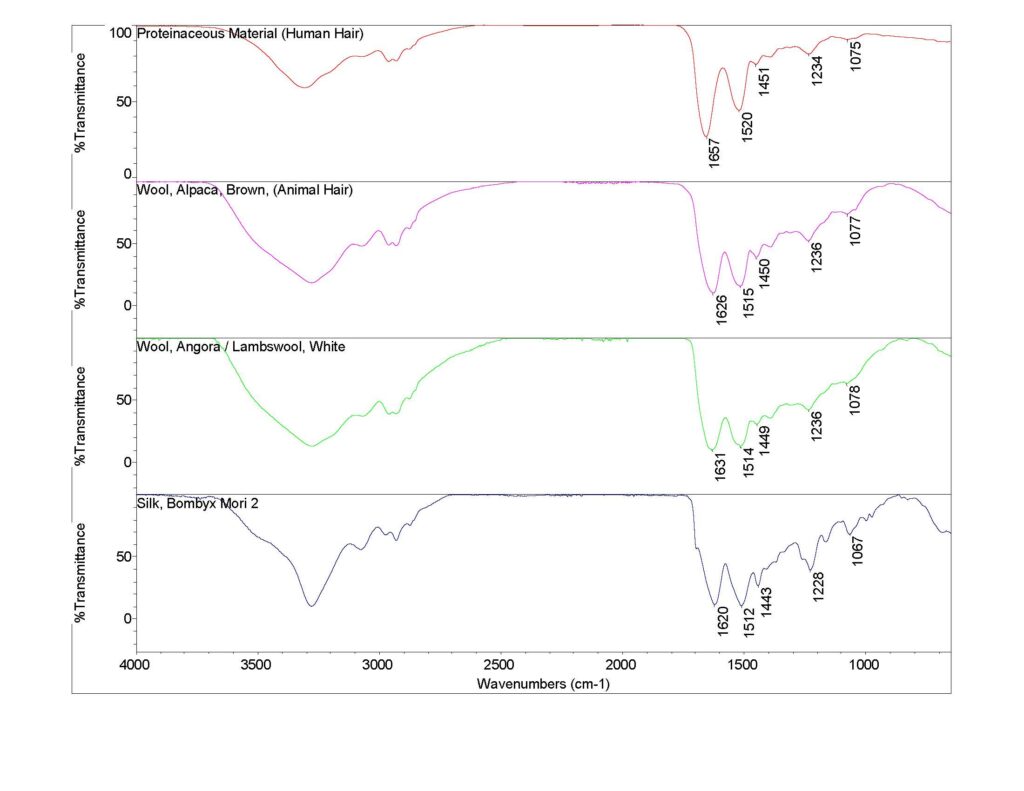
Click on any image to enlarge.
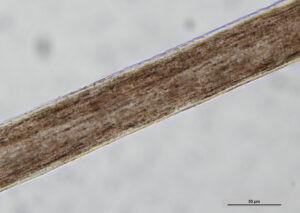
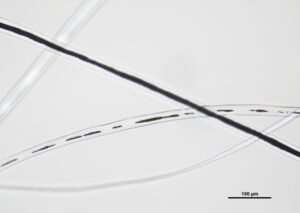
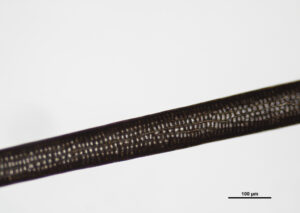
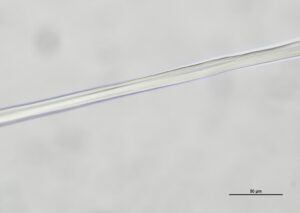
Light microscopy is useful to examine a hair’s morphology and the internal microstructure that can aid in distinguishing possible species. Many animals also have finer hairs called underfur that are generally not identifiable to a particular species, though some fine hairs may be able to be identified (e.g., bat hairs).
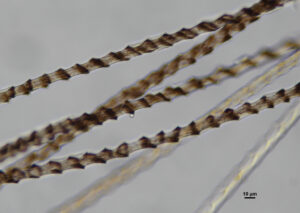
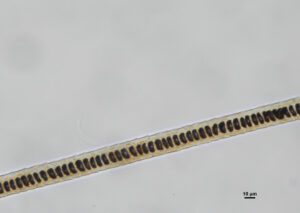
Cellulose-based materials are another type of particulate commonly found among environmental contaminants. Cellulose is the main component of natural plant-based fibers, and their spectra will be similar to manufactured fibers made with regenerated cellulose such as Rayon and Lyocell. For cellulose-based fibers, PLM can be used to distinguish the fiber type if the fiber hasn’t degraded too much. Natural materials are subject to decomposition and damage to their morphology so PLM may not be able to identify a specific fiber or particle, nor a specific source.
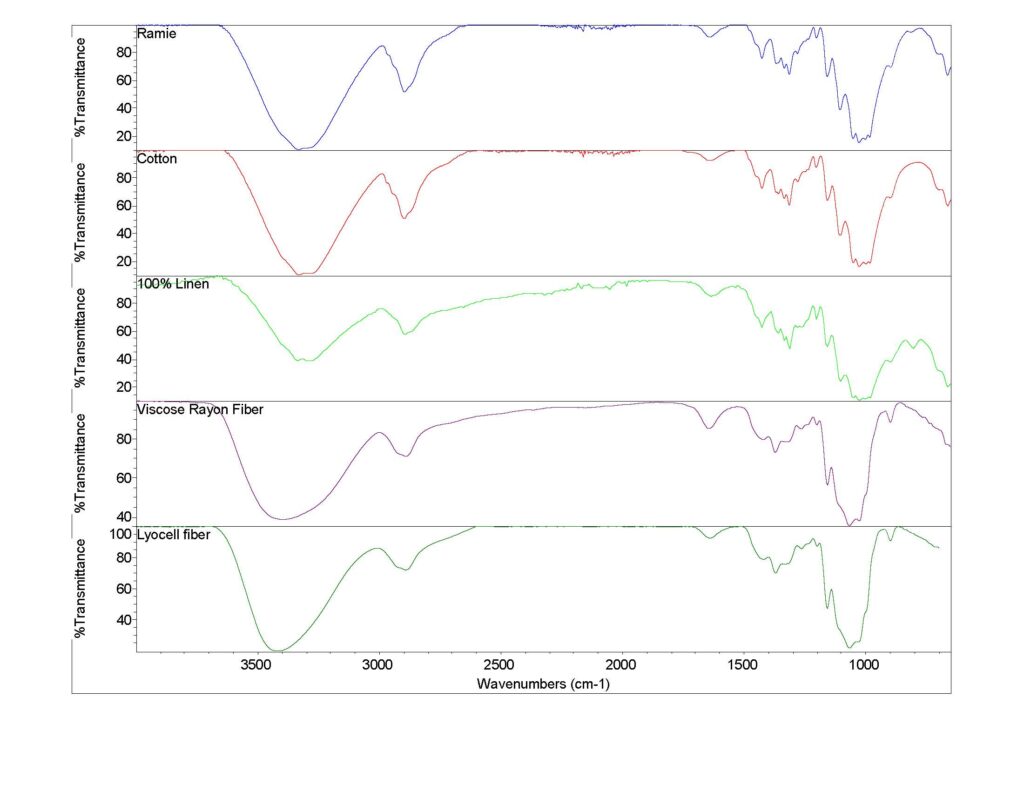
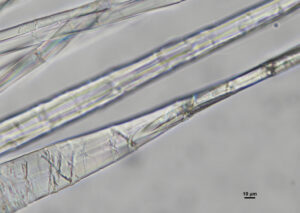

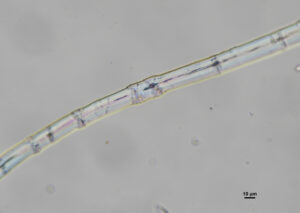
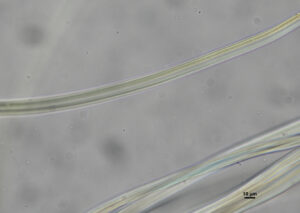
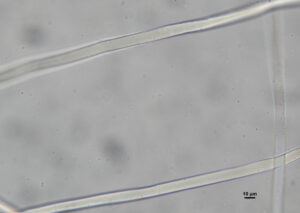
Some cellulose-based fibers and particles may have an additional lignin component; however, the presence of lignin in cellulose-based materials is not unique to a single plant source. The presence of lignin is determined by a peak at around 1510 cm-1. The morphology of the plant material may be useful for differentiating among possible sources such as bast fibers from the stems of woody plants, leaf fibers, wood particles, or other materials such as cardboard, which are made from some of these components.
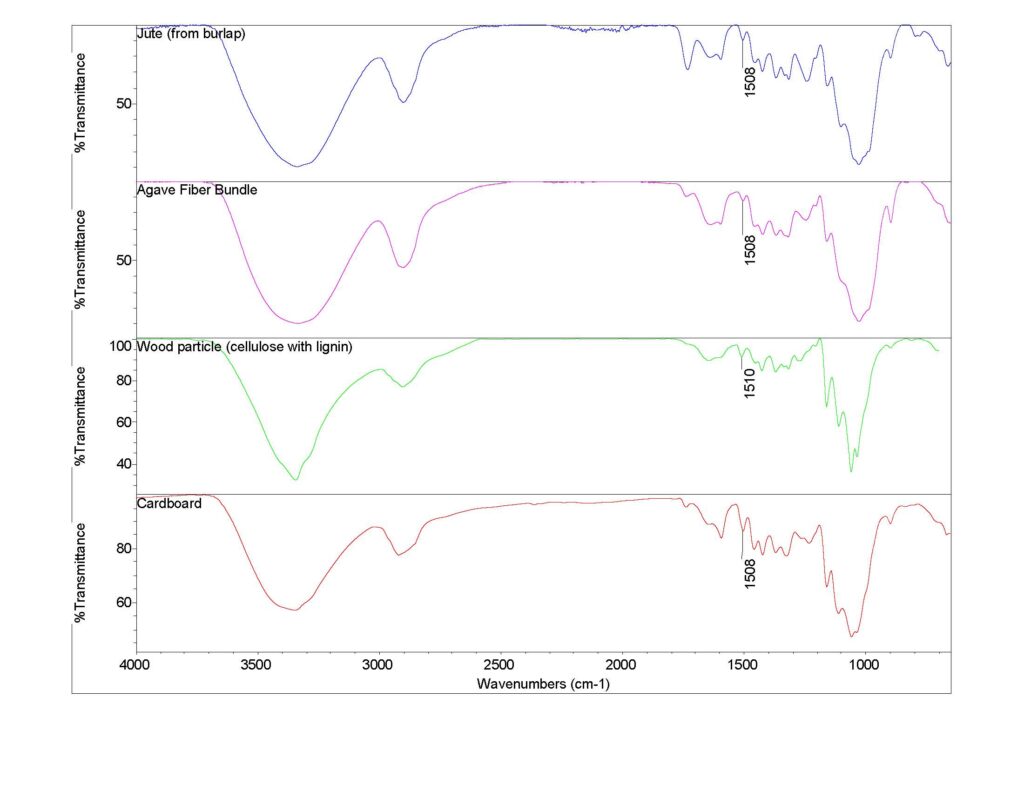
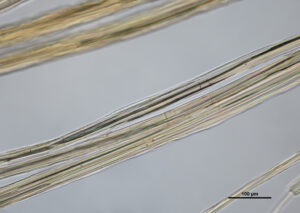
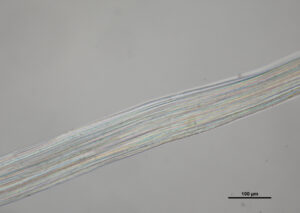
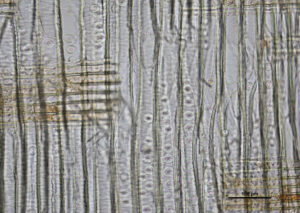
If your company is finding hairs or fibers in your products or needs a comparison of hair or fiber contaminants to possible sources, please contact McCrone Associates to speak with a hair and fiber subject matter expert scientist for guidance on the analyses we can provide.
References:
Koch, S., & Nehse, K. (2020). Fibers. Handbook of Trace Evidence Analysis, 322-376.
Trejos, T., Koch, S., & Mehltretter, A. (2020). Scientific foundations and current state of trace evidence—a review. Forensic Chemistry, 18, 100223.
Comments
add comment